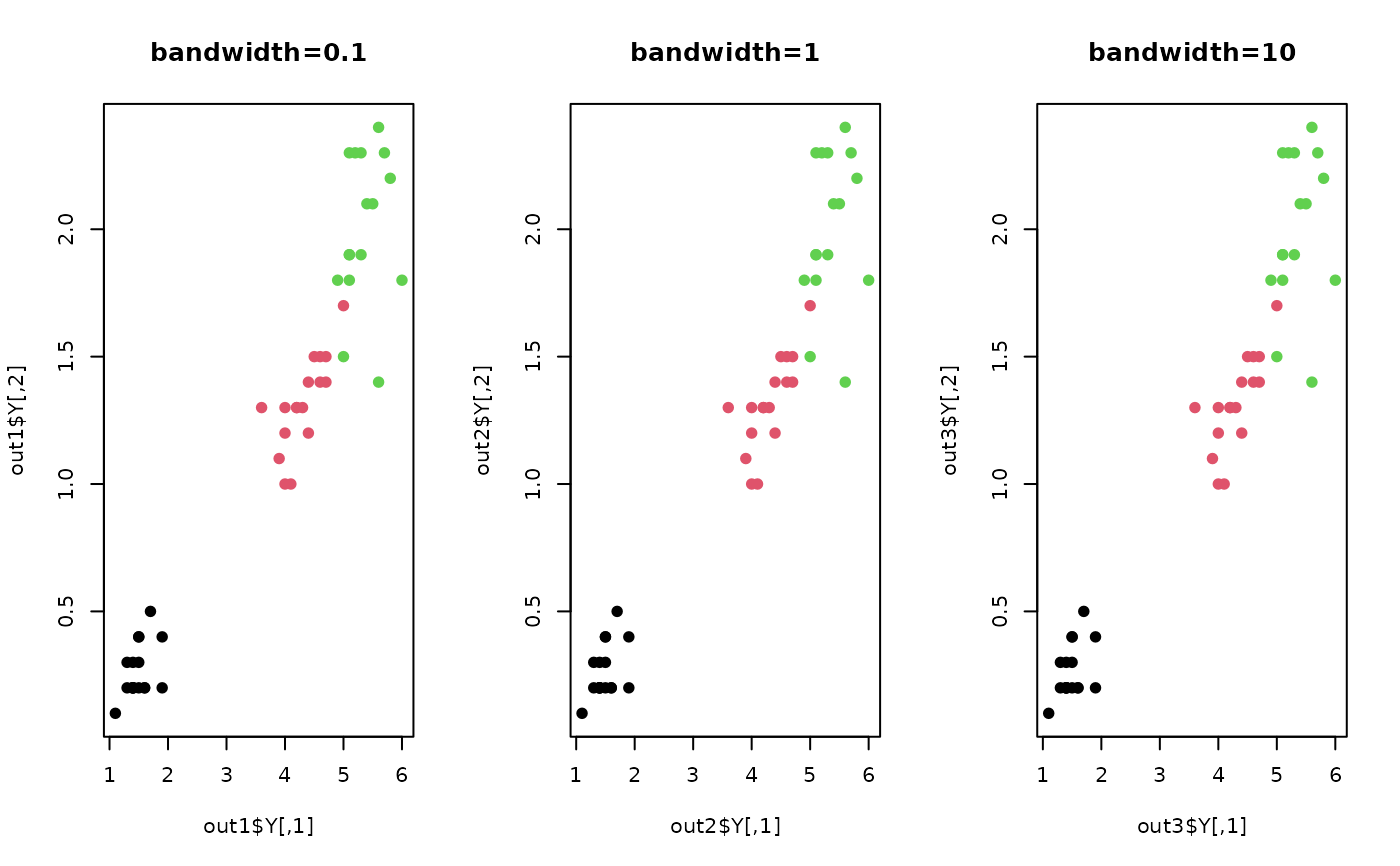Laplacian Score (He et al. 2005) is an unsupervised linear feature extraction method. For each feature/variable, it computes Laplacian score based on an observation that data from the same class are often close to each other. Its power of locality preserving property is used, and the algorithm selects variables with smallest scores.
do.lscore(X, ndim = 2, ...)Arguments
- X
an \((n\times p)\) matrix or data frame whose rows are observations and columns represent independent variables.
- ndim
an integer-valued target dimension (default: 2).
- ...
extra parameters including
- preprocess
an additional option for preprocessing the data. See also
aux.preprocessfor more details (default:"null").- type
a vector of neighborhood graph construction. Following types are supported;
c("knn",k),c("enn",radius), andc("proportion",ratio). See alsoaux.graphnbdfor more details (default:c("proportion",0.1)).- t
bandwidth parameter for heat kernel in \((0,\infty)\) (default:
1).
Value
a named Rdimtools S3 object containing
- Y
an \((n\times ndim)\) matrix whose rows are embedded observations.
- lscore
a length-\(p\) vector of laplacian scores. Indices with smallest values are selected.
- featidx
a length-\(ndim\) vector of indices with highest scores.
- projection
a \((p\times ndim)\) whose columns are basis for projection.
- trfinfo
a list containing information for out-of-sample prediction.
- algorithm
name of the algorithm.
References
He X, Cai D, Niyogi P (2005). “Laplacian Score for Feature Selection.” In Proceedings of the 18th International Conference on Neural Information Processing Systems, NIPS'05, 507--514.
Examples
# \donttest{
## use iris data
## it is known that feature 3 and 4 are more important.
data(iris)
set.seed(100)
subid <- sample(1:150, 50)
iris.dat <- as.matrix(iris[subid,1:4])
iris.lab <- as.factor(iris[subid,5])
## try different kernel bandwidth
out1 = do.lscore(iris.dat, t=0.1)
out2 = do.lscore(iris.dat, t=1)
out3 = do.lscore(iris.dat, t=10)
## visualize
opar <- par(no.readonly=TRUE)
par(mfrow=c(1,3))
plot(out1$Y, pch=19, col=iris.lab, main="bandwidth=0.1")
plot(out2$Y, pch=19, col=iris.lab, main="bandwidth=1")
plot(out3$Y, pch=19, col=iris.lab, main="bandwidth=10")
 par(opar)
# }
par(opar)
# }